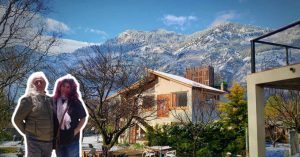Once Featured in ‘Life of Pi’, This Puducherry Homestay is a 200-YO Heritage Villa
Jyoti Cariappa Saikia restored a historic homestay in Puducherry. In it, an old iron safe remains untouched for over a hundred years, adding to the allure of its charming French-style architecture — making it a fascinating place to visit.
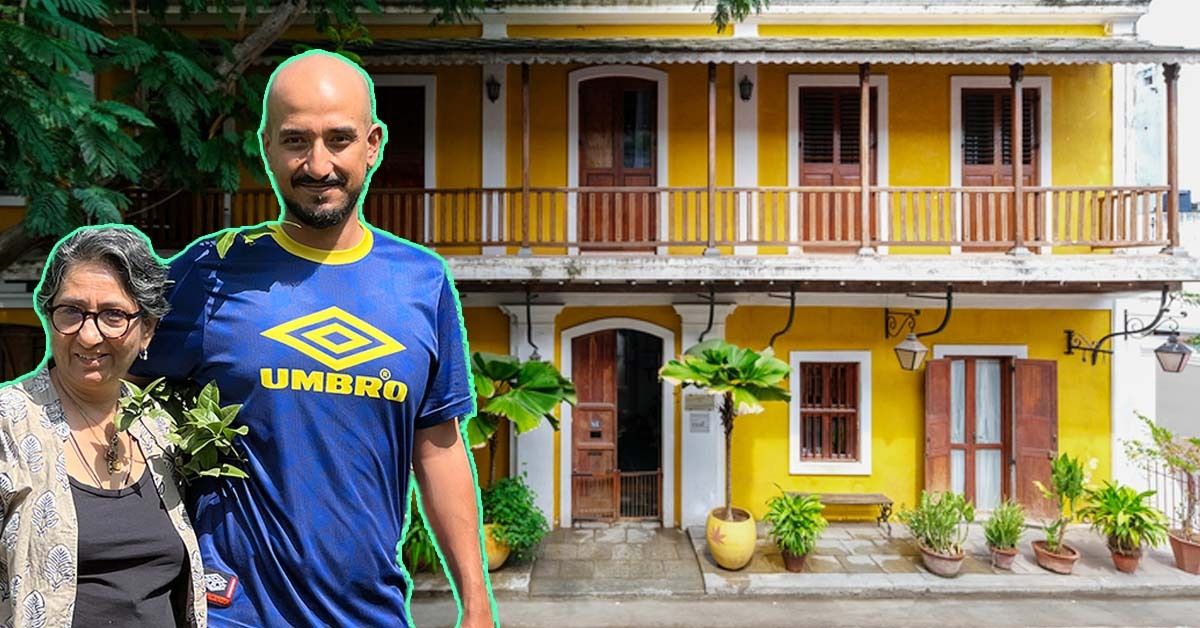
One morning last year, while the rest of Puducherry was fast asleep, Sudeep Sen, a Bengali poet, was working on a new piece. The protagonist was an iron safe embedded in a wall of his room at the Gratitude Heritage homestay.
“In Room 4, the safe in the wall has not been opened in a 150 years…It has seen history, life changing, aging — but no one knows what lies within. But what is inside? — The first owner’s ashes, her will, wealth, gold; old currencies, lover’s relics?” the first couple of stanzas read.
While this does make for a very compelling read, Siddarth Saikia, the owner and manager of affairs at the homestay, says it isn’t a piece of fiction; the safe exists. “The key is lost in time, and the safe’s outer frame bears many markings. Many have tried to prise it open to check what it contains, but it won’t budge,” he shares.
Even a professional locksmith, who couldn’t get through, informed Siddarth and the family that the safe’s rusted interiors and strategic position within the wall meant that the only way to crack it open would be to break down the wall itself. And no one wanted to resort to this option.
So, to this day, the safe lies untouched by the fingers of time, holding within it many mysteries and adding its own little bit of intrigue to the property.
But, attractive as it is, this isn’t the only draw at the Gratitude Heritage homestay helmed by a mother-son duo from Delhi. The vibrant yellows of the bungalow are a sight for sore eyes, its layout offering pockets of unexpected calm to the weary traveller or to anyone who comes looking for some peace and quiet.
Would you believe it if you were told that not more than two decades ago, this sprawling paradise was a “crumbling and dilapidated spot”?
We didn’t, and so, Siddarth settled down for a tete-a-tete with The Better India, to unpeel the fascinating layers that lie beneath the homestays’ past.

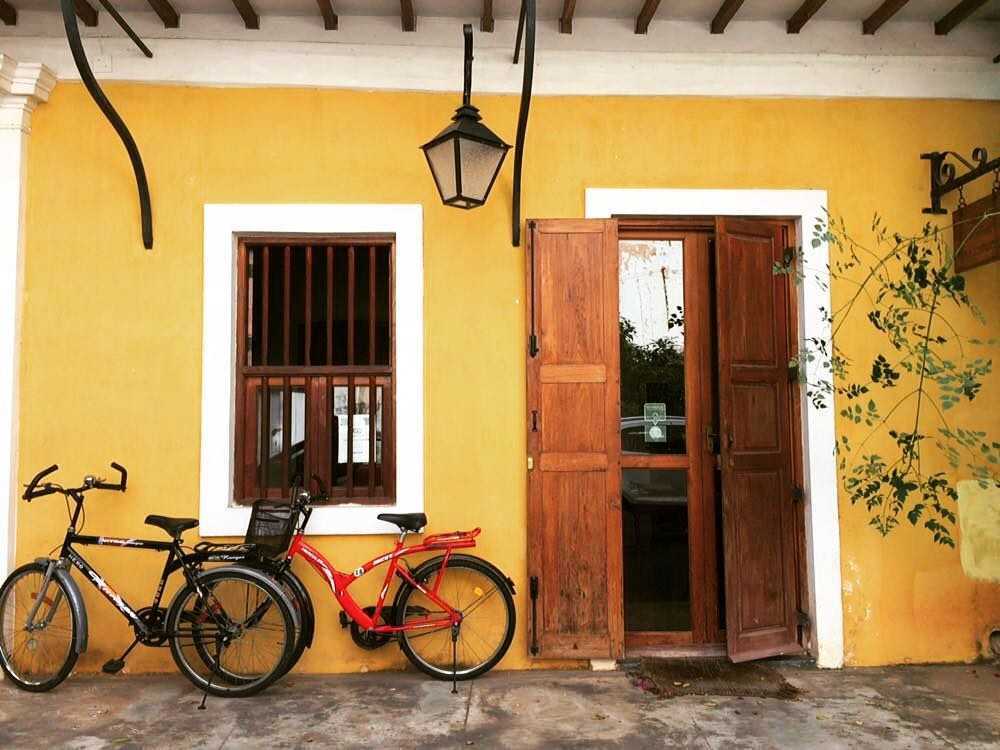
‘My mother fell in love with a crumbling house’
Jyoti Cariappa Saikia (67), a staunch devotee of Shri Aurobindo — who is also credited with inspiring the Auroville Township project — would make frequent trips to Puducherry. It would be lovely to have a place of my own, she thought. But months of scouting for apartments yielded no results. Until one day, in 2004, when Jyoti spotted a crumbling home that was up for sale.
The owner, an elderly woman in her seventies was looking to relocate to Marseille in France where her children had moved. Elated at the “pure coincidence”, Jyoti made an offer for the property.
When asked the reason for her spur-of-the-moment decision, she says it was a special vibe. “It made it impossible to walk away even though I had set out looking for a smaller and easier-to-maintain apartment,” she reiterates.
We don’t blame her. The 200-year-old tale of Gratitude Heritage would pale any history lesson in comparison.
It has watched the world evolve; from the 18th century — when Puducherry was rife with traders, engineers and builders who came to work with the French East India Company — to the present day. It is undeniable that the French left their indelible imprint on the city; the town still reflects French sensibilities in the language, art, culture and the settlements.
And Gratitude Heritage is one of history’s best-kept secrets.
The story of the home traces back to the early 1700s when Abraham Guerre, from the French-speaking province of St.Imier in Switzerland, came to Puducherry to work as a hospital administrator with the French East India Company. Abraham and his wife Marie Brunet had nine children, the third of whom Jacques Guerre inherited the house and sold it to a gentleman Francois Ulmans Marie Clark Michel in 1940.
It was one of Francois’s descendants who sold the home to Jyoti, who saw the location as an incentive to be in close quarters to the Sri Aurobindo Ashram. Her mind was already racing with ideas of restoring the property to its original glory, equipping it with amenities while preserving its ancient mystique.
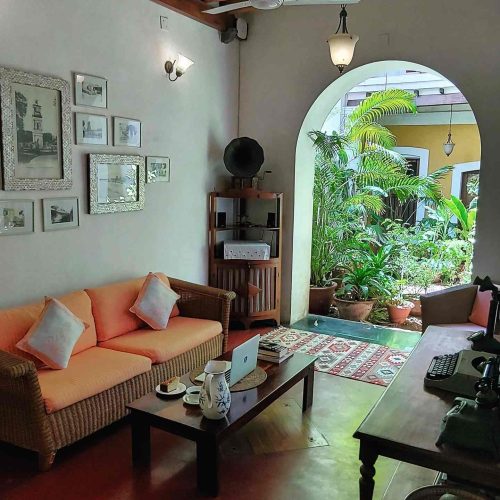
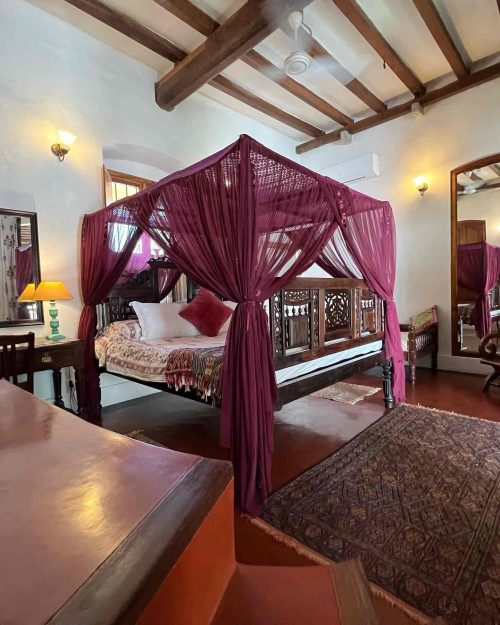
Jyoti credits architect Ajit Koujalgi of INTACH (Indian National Trust for Art and Cultural Heritage) for lending his expertise to see this to fruition. She recalls, “I remember some interesting side trips looking for authentic doors, windows, and wooden beams to restore and build the property. It was challenging and time-consuming but mostly enjoyable.”
Adding to this, Siddarth says the goal of the restoration was to be as historically accurate as possible. “We wanted to be a hundred percent authentic.” With heritage becoming a “buzzword”, it wasn’t uncommon to hear of ancient buildings being razed in Puducherry to make way for brand-new residences. He did not want Gratitude Heritage to follow suit.
“We wanted to keep the architectural motifs intact but restore the place using new materials and techniques,” he says, adding that the pictures and decor that you see around the place are borrowed from one of Francois’ ancestors.
Keeping history intact
If these pictures are giving you a deja vu, we’ll explain. The facade of Gratitude Heritage was featured in the critically acclaimed film Life of Pi (2012). You might remember it from there.
Elaborating on this, Siddarth says, “The director and the production team of the film wanted to shoot in Puducherry and had reached out to us. The facade features in one of the opening scenes.” He adds that the photography team and cinematographer director stayed at Gratitude Heritage during the filming of the movie.
The homestay has seen its share of fame. In 2019, it featured in a BBC travel documentary series ‘The Real Marigold Hotel’.
But these accolades are merely feathers in its cap. The real success lies in its restoration.
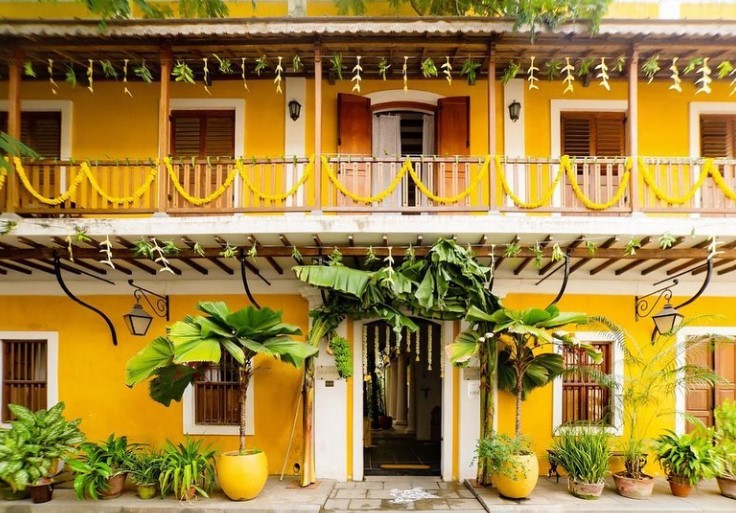

The homestay features old wood that was collected from homes being demolished across Tamil Nadu. An interesting thing to note is that the home features ‘Madras terracing’ — a novel kind of terracing where the artisan employs his hands and feet to assemble the bricks. With modern techniques substituting this traditional craftsmanship, sourcing artisans was a challenge.
Elaborating, Siddarth says, “In Puducherry, we have the vernacular Tamil style of architecture, the Franco-Tamil style (that draws heavily from Chettiar style), and then those which are predominantly said to be French style because of the arches and pillars and certain other details. Gratitude Heritage falls in the third category.”
During the restoration process, care was taken to not upset anything of the old home. “No walls were broken and no trees were cut,” Siddarth shares. He goes on to narrate an anecdote of how a mango tree in the courtyard was hindering the construction.
Instead of chopping it off, they called in ‘tree doctors’ who pulled the tree out of the way until work was complete.

Featuring eight double rooms and one single room, Gratitude Heritage is a spacious paradise. However, be prepared for some “quirkiness” warns Siddarth. “Each room is a different size with no consistency at all. The vintage furniture was sourced over many years from homes that were being brought down. Every bed, table, and chair came in different shapes and sizes, so no two rooms are alike.”
That being said, whether it is the four-poster beds, the chequered duvets, the rocking chairs, the quaint lampshades — everything is a testament to how local craft blends with sustainability. The topic of sustainability transcends the rooms and makes its way into the practices that are followed at the homestay.
Single-use plastic is a strict no and solar panels are the hero. Even the staff right from the chefs to the housekeeping are from the locality. “We wanted to ensure that their travel to and from home is not contributing to the carbon footprint,” Siddarth adds.
Although there are many moments of quiet and calm at Gratitude Heritage, there is never a dull one. Evenings are a blur of activity as the thrum of events, art workshops, and dance recitals fill the air. And one emotion that is certain to trump the rest is gratitude.
One of the virtues prided on by the ashram — gratitude — Siddarth says, is what brought his mother to Puducherry and led them to the life they have today. It is only right that we named our dream after it too, he smiles.
But even as we reach the end of this fascinating homestay, a question that continues to linger on my mind is about the iron safe and its contents.
Sudeep Sen’s poem does the suspense justice, saying, “Perhaps, it is best kept as a mystery, in a world where there is so little of it.” And, the same emotion is apt for Gratitude Heritage too, I think.
Edited by Pranita Bhat
If you found our stories insightful, informative, or even just enjoyable, we invite you to consider making a voluntary payment to support the work we do at The Better India. Your contribution helps us continue producing quality content that educates, inspires, and drives positive change. Choose one of the payment options below for your contribution- By paying for the stories you value, you directly contribute to sustaining our efforts focused on making a difference in the world. Together, let’s ensure that impactful stories continue to be told and shared, enriching lives and communities alike. Thank you for your support. Here are some frequently asked questions you might find helpful to know why you are contributing?

This story made me
- 97
- 121
- 89
- 167







